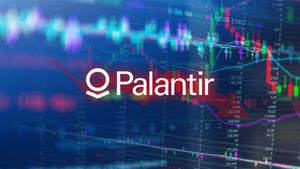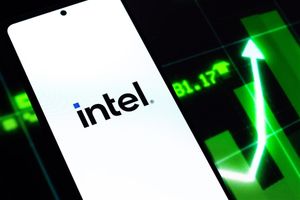
In a move that reverberated across global financial markets, investment banking giant JPMorgan (NYSE: JPM) advised its clients to "buy the dip" following a notable stock market decline on Friday, August 1, 2025. The recommendation came after a significant sell-off, particularly impacting the technology sector, which saw the S&P 500 index drop by -1.65%. This counsel from one of Wall Street's most influential institutions signaled a potential turning point for investors grappling with market volatility and raised questions about the trajectory of high-flying tech valuations.
The immediate implication of JPMorgan's advice was a potential surge in buying activity, as investors, reassured by the firm's bullish outlook, might look to capitalize on lower prices. This "buy the dip" strategy, a common tactic during market corrections, suggests that the underlying fundamentals of the affected companies remain strong, and the downturn is merely a temporary setback. However, it also put a spotlight on the factors that triggered the initial decline, prompting a deeper look into market positioning and future earnings prospects, especially for technology behemoths.
Unpacking the August 1st Tech Sell-Off
The market downturn on Friday, August 1, 2025, was characterized by a broad-based decline, with technology stocks bearing the brunt of the selling pressure. The S&P 500's (INDEXSP: .INX) -1.65% drop on that day marked a significant event, triggering what JPMorgan's market intelligence team later described as a "buying opportunity." This decline in U.S. technology stocks was attributed to a confluence of factors, including increasingly high valuations, crowded market positions in certain tech giants, and pre-emptive selling ahead of a highly anticipated earnings report from chipmaker NVIDIA (NASDAQ: NVDA).
The timeline of events saw the market dip on August 1st, followed by JPMorgan's strategic advice issued around August 20-21, 2025. The firm’s rationale was clear: they viewed the decline as a "temporary setback rather than a long-term trend." Key players involved included JPMorgan's market intelligence team, who crafted the advice, and prominent technology companies whose valuations were under scrutiny. Initial market reactions post-dip indicated that "dip-buyers" were indeed triggered, suggesting that a segment of investors was already prepared to re-enter the market at reduced prices, even before JPMorgan's explicit recommendation. The anticipation surrounding NVIDIA's earnings was particularly acute, as a strong performance was expected to "reignite market interest in AI-related themes" and potentially drive a broader market rebound.
Companies Poised for Gains or Losses
JPMorgan's "buy the dip" advice following the August 1st tech sell-off carries significant implications for various public companies and market sectors. Companies with robust fundamentals, strong balance sheets, and compelling growth narratives, especially within the artificial intelligence (AI) space, stand to benefit. NVIDIA (NASDAQ: NVDA), for instance, was at the epicenter of the pre-earnings selling, but a strong subsequent earnings report could validate JPMorgan's bullish stance and drive its stock higher, pulling other AI-related firms along. Other large-cap technology companies like Apple (NASDAQ: AAPL), Microsoft (NASDAQ: MSFT), and Amazon (NASDAQ: AMZN), which often lead market rallies, could also see renewed investor interest as confidence returns.
Conversely, companies with weaker fundamentals, speculative business models, or those whose valuations were already stretched prior to the dip, might struggle to recover quickly. Investors who bought into the hype without scrutinizing underlying business health could face prolonged periods of underperformance. The event also highlights the importance of diversification; companies heavily reliant on a single product or market segment, particularly those with high beta to the overall tech sector, could experience amplified losses during future corrections. For the broader market, a successful rebound, as predicted by JPMorgan, would generally lift most public companies, though the tech sector would likely lead the charge.
Wider Significance and Historical Context
The August 1st tech sell-off and JPMorgan's subsequent "buy the dip" call fit into several broader industry trends. Primarily, it underscores the ongoing market fascination with artificial intelligence and the high valuations often commanded by companies perceived as leaders in this transformative technology. The event served as a stress test for the market's conviction in these growth narratives, particularly as concerns about "crowded positions" and stretched multiples began to surface. It also highlighted the disproportionate influence of a few mega-cap tech stocks on overall market performance, where a significant move in one or two names can ripple through the entire index.
The potential ripple effects extend beyond the immediate tech sector. A sustained recovery, or lack thereof, would influence investor sentiment across all industries, affecting capital allocation decisions and risk appetite. Competitors in the AI space and related industries, such as cloud computing and semiconductor manufacturing, would closely watch the performance of leaders like NVIDIA (NASDAQ: NVDA) for cues on market demand and investment trends. While no specific regulatory or policy implications were directly tied to this particular dip, periods of heightened volatility often draw increased scrutiny from financial regulators regarding market stability and investor protection. Historically, market corrections, especially those driven by valuation concerns, are not uncommon. Comparing this to past tech bubbles or significant pullbacks, such as the dot-com bust or the 2020 COVID-19 related dip, provides context on how markets eventually recover, often led by resilient companies and new technological paradigms.
What Comes Next: Navigating the Market's Path
Looking ahead from October 13, 2025, the market's response to JPMorgan's "buy the dip" advice, particularly after the August 1st tech sell-off, will offer crucial insights into both short-term and long-term possibilities. In the short term, the focus will remain on corporate earnings, especially the conclusion of the Q3 earnings season. Strong performances, particularly from technology companies that experienced the dip, could validate the "buy the dip" strategy and fuel further upside. Conversely, any disappointments could lead to renewed skepticism and potentially more volatility. The market will also be closely watching macroeconomic indicators, including inflation data and employment reports, to gauge the overall health of the economy and its potential impact on corporate profitability.
In the long term, the trajectory of the AI theme will continue to be a dominant factor. The August dip served as a reminder that even the most promising sectors are not immune to corrections. This may lead to strategic pivots among investors, emphasizing not just growth, but also profitability and sustainable business models within the tech space. Market opportunities may emerge for companies that demonstrate resilience and adaptability, as well as for those undervalued gems that were unfairly punished during the broader sell-off. Potential scenarios range from a robust, V-shaped recovery, especially if earnings and economic data remain strong, to a more prolonged period of consolidation if underlying concerns about valuations or economic headwinds persist. Investors should prepare for continued market dynamism, where selective stock picking and a focus on quality will be paramount.
Comprehensive Wrap-Up: Assessing the Lasting Impact
The "buy the dip" recommendation from JPMorgan (NYSE: JPM) following the August 1, 2025, stock market decline, particularly in the technology sector, stands as a significant event in the recent financial calendar. It underscored the persistent belief among major financial institutions that market pullbacks, especially in fundamentally strong sectors, represent opportunities rather than reasons for panic. Key takeaways include the market's sensitivity to high valuations, the influential role of mega-cap tech companies, and the enduring power of thematic investing, particularly in artificial intelligence.
Moving forward, the market will likely assess the success of this "buy the dip" strategy by observing the performance of the tech sector and broader indices in the coming months. If the market rebounds strongly, it will reinforce the conviction that short-term volatility offers entry points for long-term investors. However, if the recovery is tepid, it might signal deeper underlying issues. The lasting impact of this event could be a recalibration of risk appetites and a renewed emphasis on due diligence, even in high-growth areas. Investors should continue to watch for Q3 earnings results, any shifts in monetary policy, and the ongoing evolution of AI technologies. These factors will be crucial in determining whether the August 1st dip was merely a blip on the radar or a precursor to a more significant market re-evaluation.
This content is intended for informational purposes only and is not financial advice






